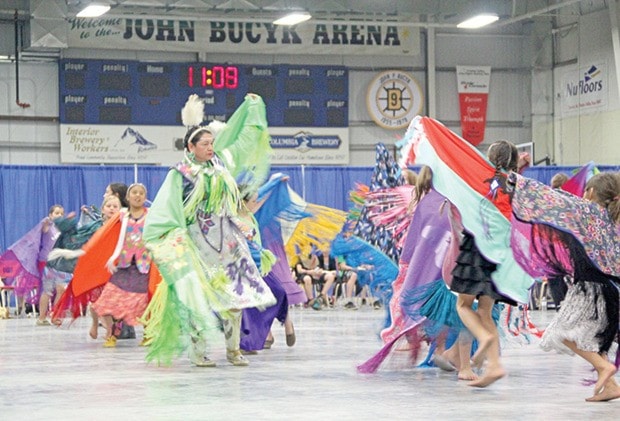It’s pretty vague.
If you read the Ministry of Education’s three-page aboriginal curriculum, which is posted online, you might find it difficult to figure out what exactly its implications are. For instance, what does “ensuring aboriginal content is a part of the learning journey for all students” mean on the ground in School District 8?
Part of the answer is we don’t know yet, because what the newly introduced curriculum calls for is engagement with local aboriginal communities, leaving the task of information gathering to each individual district as they interact with the First Nations in their respective areas.
That means information that would normally be included in a curriculum, detailing exactly what content needs to be delivered to the students, won’t come from the Ministry of Education but from the mouths of First Nations people themselves.
In the past four months since the curriculum began implementation, SD8 has held a number of open houses and cultural events in which they invited elders to come to the district and teach the kids about their heritage. Superintendent Jeff Jones was flattered when he was invited into a drumming circle during one event at Trafalgar.
“I thought it was a harbinger of better things to come,” said Jones.
“The strongest thing I saw was people connecting for the first time. It made me aware that many aboriginal parents haven’t connected with each other. There have been generational gaps in families who were split apart in residential schools.”
In other words, he said, “generations of knowledge was lost.”
“Even some of our parents with aboriginal heritage are uncomfortable or do not know how to teach their children about their culture.”
It’s a daunting mandate they’ve received from the ministry, one that calls for them to twin their efforts with that of the recently released Truth and Reconciliation Report. So funds are being funnelled into a number of projects aimed at retaining aboriginal knowledge, including one in which elders’ oral storytelling will be captured on film.
One of the key players in implementing the new curriculum is Danica Lee, who works as the aboriginal education enhancement agreement co-ordinator for SD8. She’s been in the district for seven years and is thrilled with how things are progressing.
She began her experience at Trafalgar as a student.
“I grew up disconnected from my community due to the impacts of colonization. For my family, my mom didn’t have any teachings or much knowledge, so she was trying to learn as well.”
But the resources were scant.
“Back then it was taboo to talk about our culture. There was a lot more racism in the schools back then. What I notice as the big difference is I used to be nervous if people saw me going into the aboriginal education room, but now we have kids from all cultures who are eager to learn and participate.”
As she puts it, “aboriginal education is for everyone.”
“It’s an exciting time. There have been lots of bumps along the way, lots of buzzwords. The indigenization of education can be interpreted different ways by institutions, is the essence of it.”
She said they’ve gone from “teaching one short unit on the Haida in Grade 4 to incorporating indigenous teachings right there into math class. Teachers have been really been taking the time to examine their own teaching practice and take risks.”
The event Jones and Lee are most proud of was the recent Yaqan Nukiy Traditional Pow-Wow, which was the seventh annual event held in Creston. Intended to encourage youth to learn about the dances important to their family, they also get to learn how to make and wear traditional regalia.
“It’s all about reconnecting families,” said Lee. “I see this new curriculum as a commitment. It’s a baby step. I think it’s a big encouragement for teachers who are curious about taking this responsibility on.”
She said the Truth and Reconciliation Report is something they will teach to the students progressively throughout the grades, shielding younger kids from some of the more grisly details until they’re ready to learn about the genocide.
“They need to learn about residential schools, and about what it was like to be taken away from your family, and to have to say goodbye.”
One of the teachers tasked with delivered cultural knowledge to the kids is Taress Alexis, who is Sinixt. She has mixed feelings about the aboriginal education curriculum as it currently stands.
“On the one hand I’m happy that the Ministry of Ed is making changes to aboriginal education. It’s definitely making steps in the direction we need to be headed. I do feel though that most teachers have a lack of connection to culture, and lack knowledge and or how to obtain that knowledge when it come to aboriginal teachings,” she said.
“What a lot of people don’t know is that with some aboriginal teachings there are protocols to follow when teaching them. I think in order for the changes to be effective teachers should seek First Nations people whose traditional territory they reside and ask them questions.”
She wants the district to aim higher.
“I think that a lot of teachers get stagnant with their teachings … they should flex more on this and allow for an evolution in not only their learning but their delivery.”

